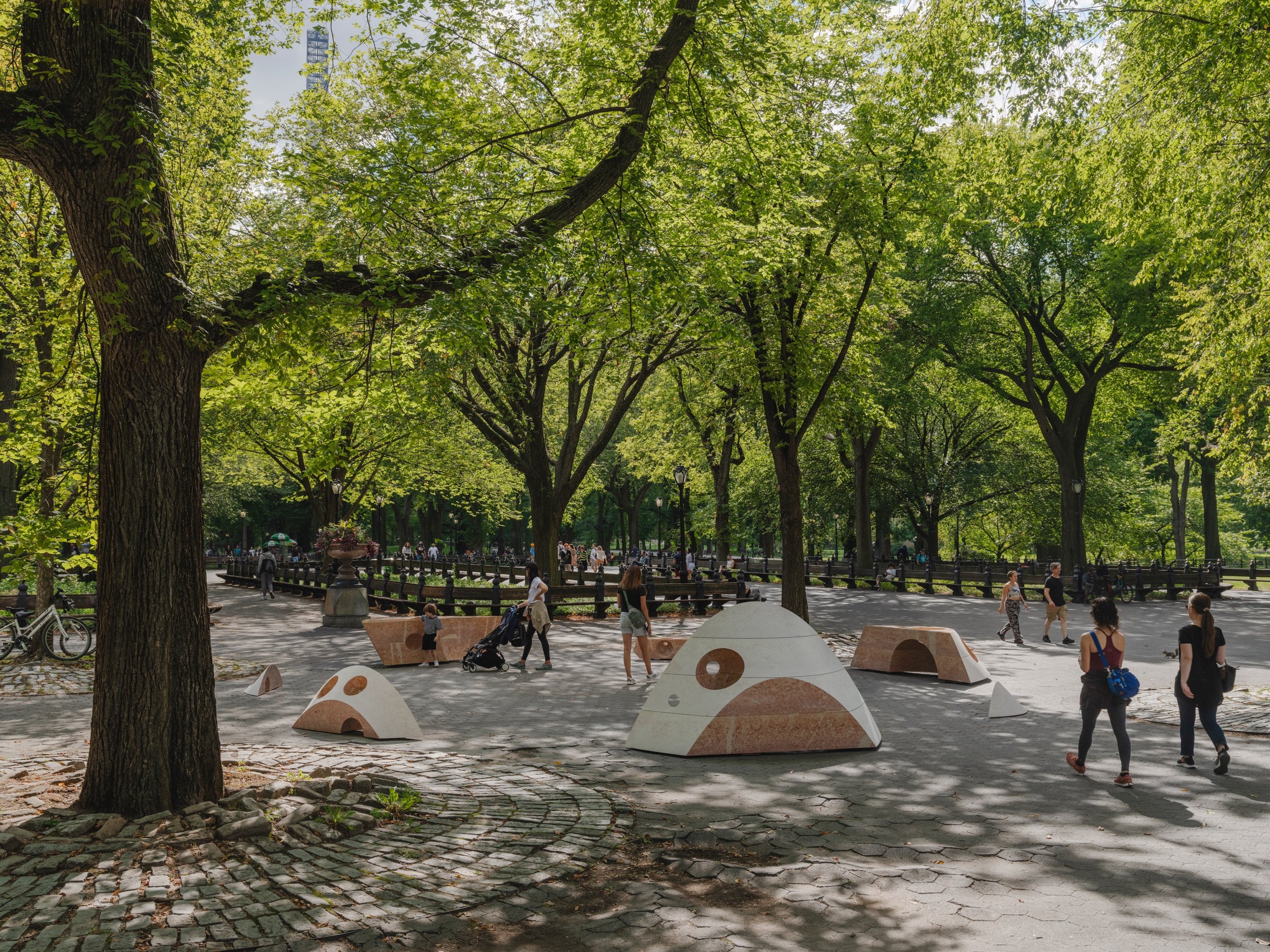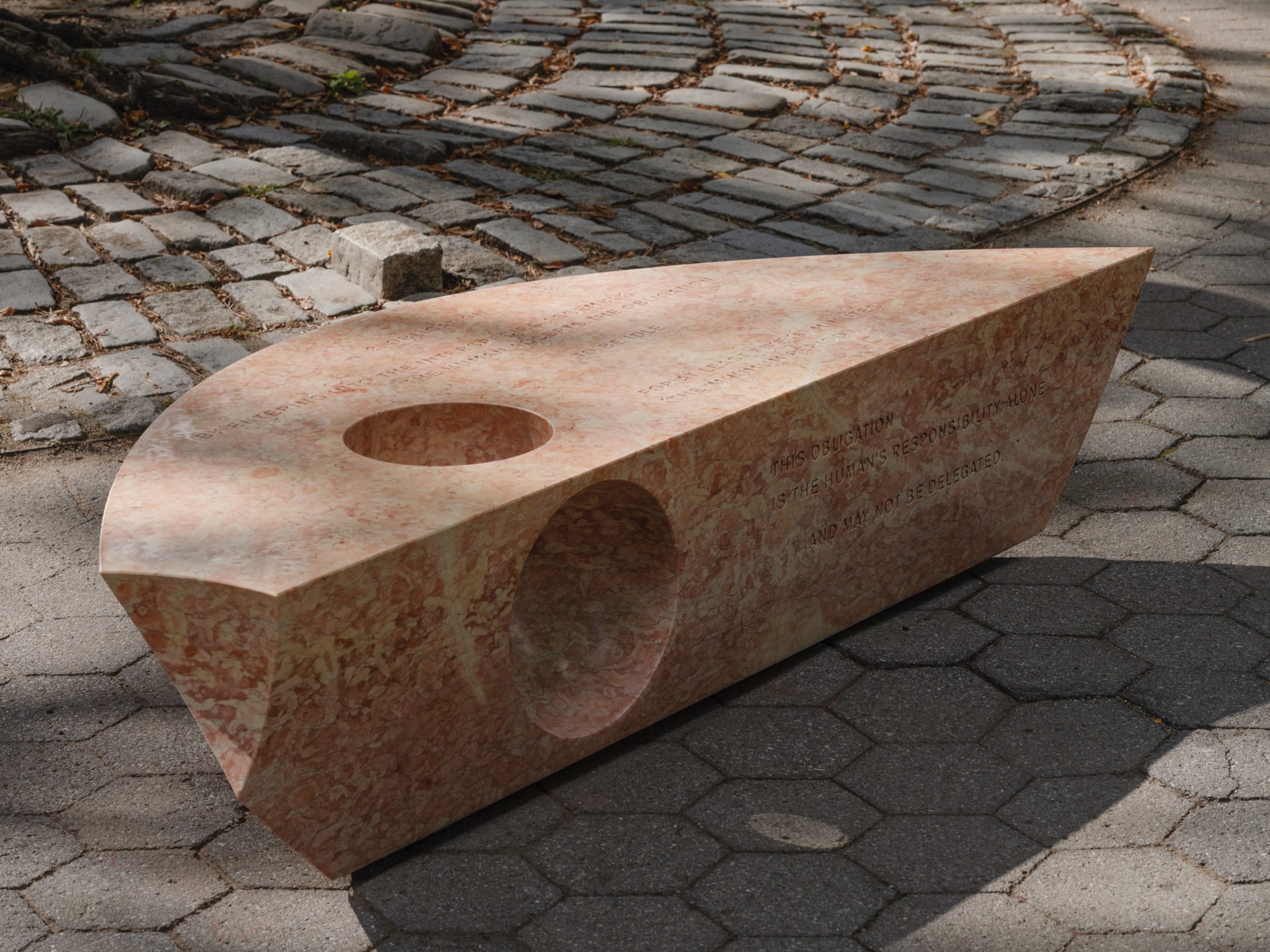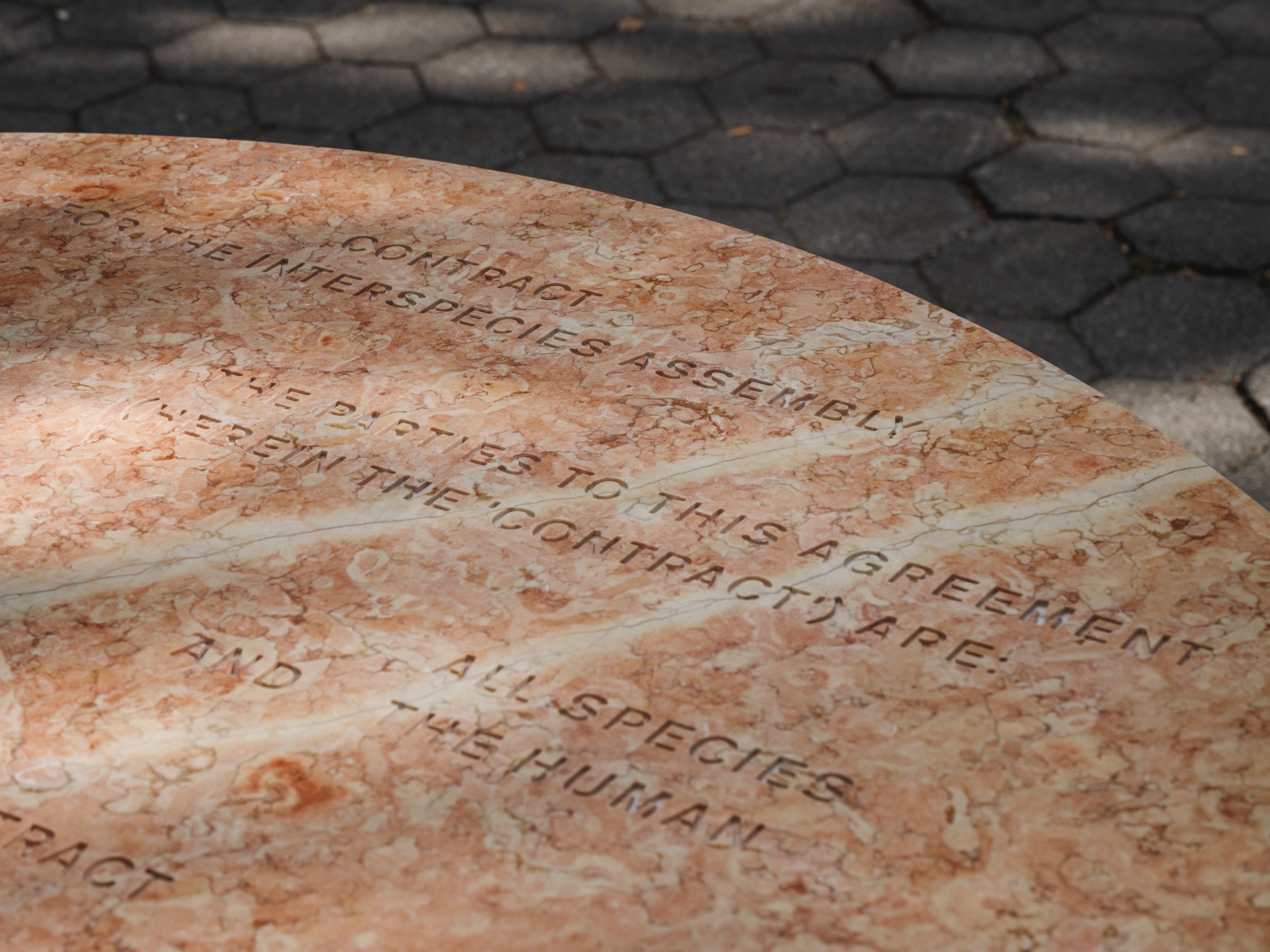05 TBA21–ACADEMY: SUPERFLEX
Might the best way to achieve meaningful empathy with the environment be to spend undistracted time with siphonophores? That’s the conclusion one might draw from the works SUPERFLEX installed at the United Nations, against the backdrop of climate change discussions. The Danish collective, founded in 1993 by Jakob Fenger, Bjørnstjerne Christiansen, and Rasmus Rosengren Nielsen, engages with a wide variety of collaborators, often scientists. Nothing if not wide-ranging, SUPERFLEX’s works are as much tools as art, and have taken the form of energy systems, beverages, copies, hypnosis sessions, infrastructure, plant nurseries, contracts, and public spaces – as well as paintings, sculptures, and films. At the September 2021 United Nations General Assembly in New York, SUPERFLEX opened ‘Interspecies Assembly’ – with, they say, a simple mission: ‘to foster friendly relationships among species, in the hopes of paving a way for a truly safe and sustainable future’.
The project itself consisted of two parts: a series of stone sculptures (also entitled Interspecies Assembly); and an installation, commissioned by ART 2030 and TBA21–Academy, called Vertical Migration. For the former, Central Park hosted a gathering site marked by a series of pink stone sculptures arranged in a broken circle. That arrangement evoked the feeling of circularity without the comforting completeness of a ring, implying both the need for consensus and the potential for disagreement.
Visitors of all species were invited to engage with the sculptures, across which an ‘Interspecies Contract’ was engraved, asking human participants to give a moment of their time to other species by ‘idling’ for five minutes to cultivate awareness for the many different life forms that surround us. ‘All species are suffering from human-made climate change’, says Nielsen, ‘but their needs and wishes are still to be accounted for’. He points to the confinements of lockdown as a useful situation within which SUPERFLEX were able to ‘idle’ and themselves find inspiration. Sensitivity to our place on earth was enhanced by our reduced activity and by our being quiet, he says: ‘there was an almost magical element to what idleness would wake in the human mind’.
Nielsen also mentions that, during this isolated time, Danish psychiatrists issued a radio statement to the effect that – while you may find yourself talking to plants during lockdown – people shouldn’t call them unless the plants start talking back to you. On the contrary, says Nielsen, in terms of giving space to other species, humans should see themselves as listeners, not purely as speakers. And he was pleased to note that the squirrels in Central Park seemed to be enjoying Interspecies Assembly. And, in addition to their hosting of squirrels, the sculptures are designed to be structures corals might like to live on – once the seas have risen these sculptures could be their homes.
For the second part of the project, SUPERFLEX claim to have invited the first non-human representative directly to the United Nations: the protagonist of Vertical Migration is a computer-generated siphonophore. This order of deep sea animals are unfamiliar to most – bizarre and beautiful, they vary wildly in size, from the length of a fingernail to that of a whale, and look like nothing found on land. They are composed of individual parts, known as zooids, which perform specialised functions. ‘Some are digesters, some are swimmers, some are reproducers,’[i] according to Heidi Sosik, a senior scientist at the Woods Hole Oceanographic Institution.
The installation SUPERFLEX created was dramatic: covering the whole 150m-high northern facade of the UN Secretariat building. That gave the siphonophores plenty of chance to move vertically, which was relevant, for they are among the many marine animals – including krill, for example – that seek refuge during daylight hours from visual predators like birds, salmon, and tuna in deeper, darker water. At night, they swim hundreds of meters closer to the surface to feed. The phenomenon, called diel vertical migration (DVM), is the largest mass migration on the planet. Moreover, these mass migrations have wider impact as related predators may also migrate in response.
Nielsen describes how SUPERFLEX led a voyage, with TBA21–Academy on the ship Dardanella, to the Coral Sea near Papua New Guinea ‘with many people we kind-of-curated because we thought they were damned interesting’. It was Shanee Stopnitsky, a marine biologist, who took them out by night to the open sea, where ‘suddenly there was massive amount of life – millions of creatures with weird forms migrating to the surface. They come up to you, but they aren’t dangerous. Then a strange thing happens – we’d never seen or heard of this alien creature before, but we felt a sense of companionship.’ So, when the invitation came for the UN General Assembly, it seemed the obvious choice to invite a siphonophore, says Nielsen: ‘we decided, let’s invite an unusual guest. It’s like all the science-fiction films you’ve ever seen, happening every night in the world.’
And why not use actual film? Filming a siphonophore is a challenge. ‘Sometimes they come and stick to your goggles’, says Nielsen. ‘Sometimes they are five meters long, and when you approach, they break. They are like tissue.’ So various captures of a few seconds each were fed into a 20 minute loop of animated simulations. ‘We have done something that is a combination of reality and animation to give you a sense of being close to the creatures,’ Nielsen said. The film aims to convey the sense of initial discovery and recognition described by Nielsen, starting from a third person perspective, then moving into ‘seeing’ from a siphonophore point of view. ‘A siphonophore doesn’t have eyes’, Nielsen points out, so how can you see the world from the perspective of the siphonophore? ‘Through your imagination’, he replies. It is an intriguing and purposeful mission, and the striking and imaginative perspectives SUPERFLEX have presented provide spectacular stimuli for discussion.
[i] Quoted in ‘Dancers From the Deep Sea Shine on the UN for Climate Week’, New York Times 16 Sept 2021
Vertical Migration was commissioned by ART 2030 and TBA21– Academy, and supported by Avatar Alliance Foundation, Dalio Philanthropies, OceanX, Woods Hole Oceanographic Institute (WHOI), New Carlsberg Foundation, The Obel Family Foundation, Beckett Fonden, and Danish Arts Foundation. Developed in close collaboration with Kollision as part of ‘Interspecies Assembly’ by SUPERFLEX for ART 2030.
All images and videos shown courtesy of SUPERFLEX.





